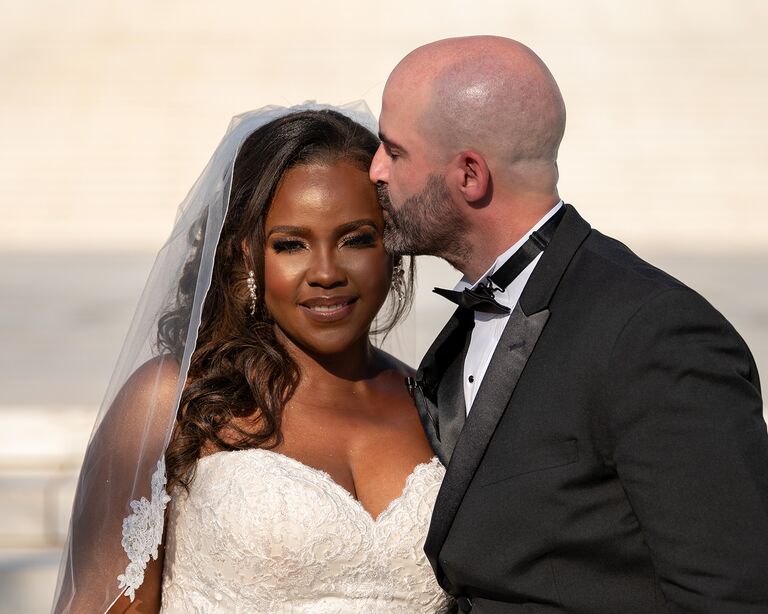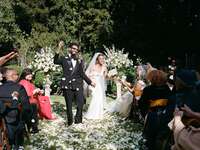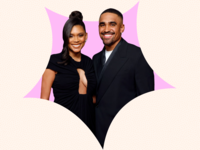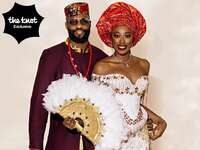"Why We Had to Marry on Loving Day"
Michele Davis and Corbett Leatherwood didn't expect to be surrounded on 16th Street in Washington, DC on their wedding day, let alone by several hostile protesters. The newlyweds, straight from a ceremony on the steps of the Supreme Court, found themselves subject to questioning about their intentions for showing up to a protest in wedding attire, while the rest of the country was imploding in racial unrest. Little did the onlookers know that Davis and Leatherwood's intentions to marry right then and there, on Loving Day, were directly correlated to the very causes they were protesting for, even as the coronavirus pandemic continued to take its hold across the US.
After COVID-19 derailed the couple's original wedding plans, Davis and Leatherwood decided to move forward with the date of June 12, 2020, which marks a significant holiday for interracial couples in particular, known as Loving Day.
What Is Loving Day?
In July 1958, Richard and Mildred Loving were arrested for their interracial marriage and it wasn't until 1967 that the Supreme Court overturned the convictions faced by the couple during the previous decade, ruling such bans on interracial marriage as unconstitutional. The story of the Lovings has become one of defiance against all odds, even laws, in order to love freely. This story, for Davis and Leatherwood, held true as they found themselves in a relationship unlike before, their own interracial relationship turned marriage, which is why marrying on Loving Day on the steps of the Supreme Court was a must.
After the smaller-size ceremony (vastly different from their original plans), the couple decided to take photos in another section of the city to honor their relationship. "We ended up going over to Black Lives Matter Plaza, and that's when everything got crazy," Davis tells The Knot. While her husband parked the car, Davis was greeted by friendly onlookers who were excited to see her wedding gown. When the groom returned, however, the conversation turned contentious.
"We found ourselves in the middle of a protest… and we really had to center ourselves on our purpose. In that protest, we were not welcome with open arms initially. It was actually pretty hostile. Nobody was physical, but it was very verbal," says Davis. "I had an out-of-body experience, but our videographer captured it all… They were basically wanting us to explain why we were there, more from Corbett than myself. People were yelling out, 'We wanna hear from him. Like what are you doing here?' So he took the megaphone."
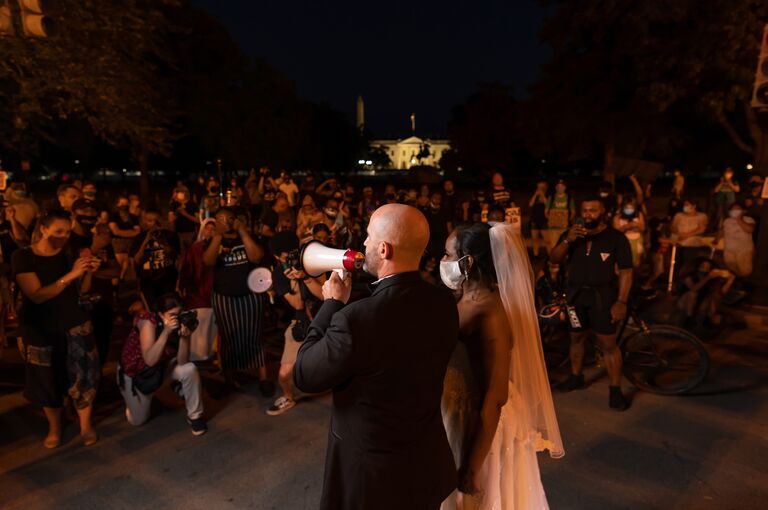
Why We Had to Marry on Loving Day
Leatherwood looks back on the encounter with empathy. "When you're in that kind of situation, you realize people are hurting. And I feel like peaceful protest is really a righteous way for the people to try to get their point across," he says. "There in frustration, I had to bring it back to our three key points. I said, 'Look, one is gratitude, one is hope, and the last is love. Under gratitude, we are grateful that on this day, 53 years ago, I would not have been able to marry her because, simply of the color of her skin. But because of the Lovings and their nine-year struggle and the different people that work together and risk themselves, their professions, their families, to be able to overturn those unjust laws, we are able to get married today."
While the Lovings certainly paved the way, the couple—even through the complexities of their own story—have gathered how progress needs to be made by normalizing interracial relationships and the perception of marrying someone outside of one's old race, leading the groom to launch into his next point of hope. "We have this progress, we're able to get married now. And in the midst of this movement, there is this hope that the voices will be heard and progress will be made in the areas that we need it most," he told the crowd. "And last is love: Love conquers all. Love wins."
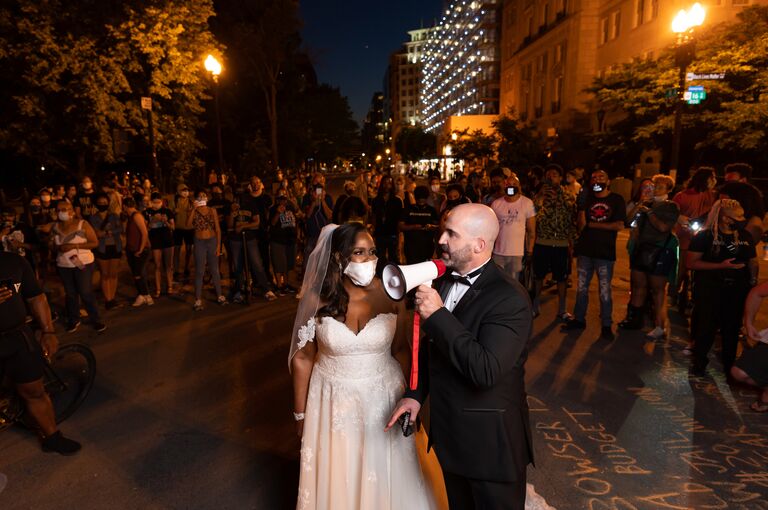
"When he finished, the hostile crowd… was cheering and clapping," the bride recalls. "And we're like, 'Oh, thank goodness, we're gonna make it out of this.' But they were cheering and clapping and then they were coming over and asking to take pictures."
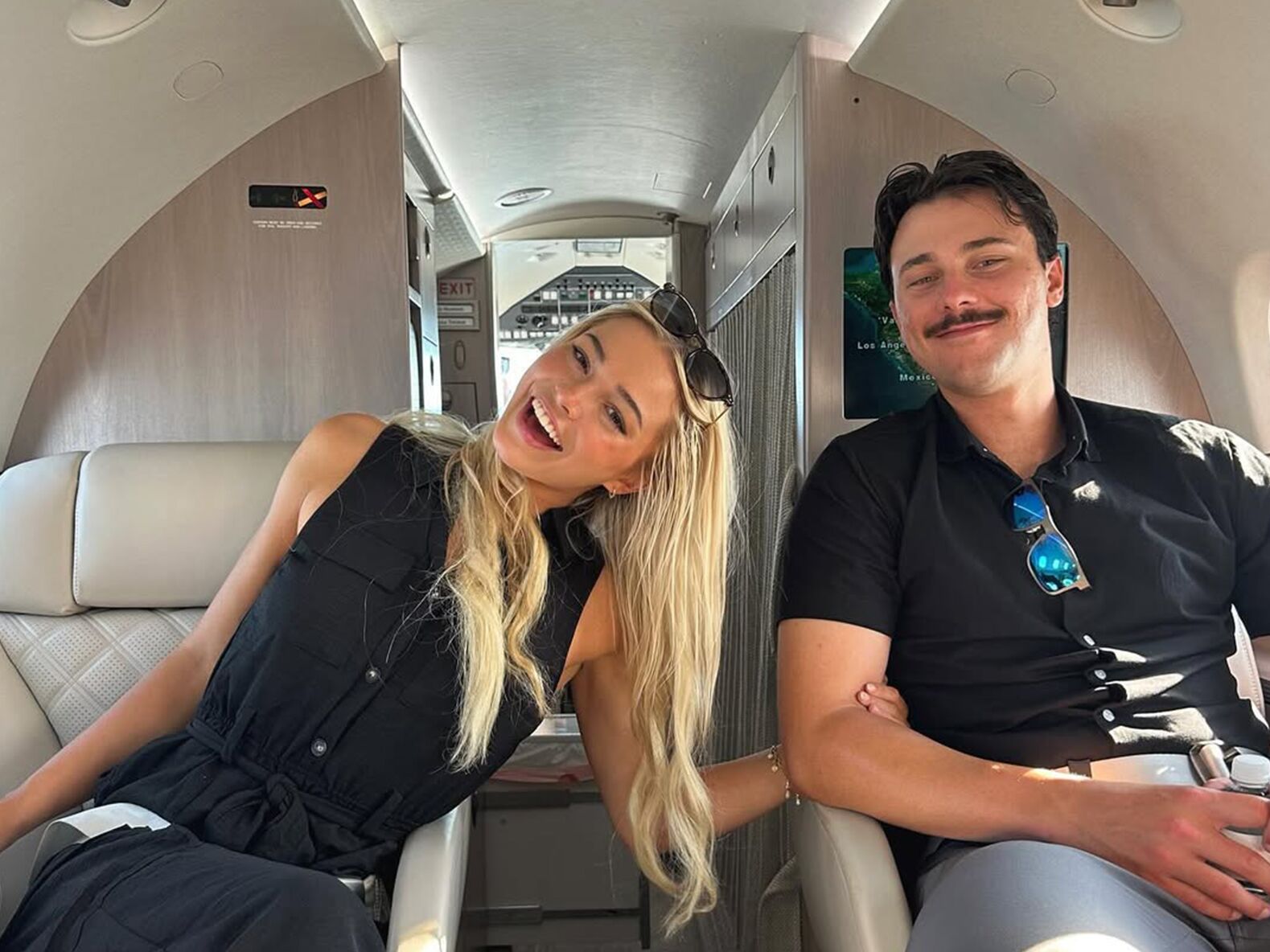

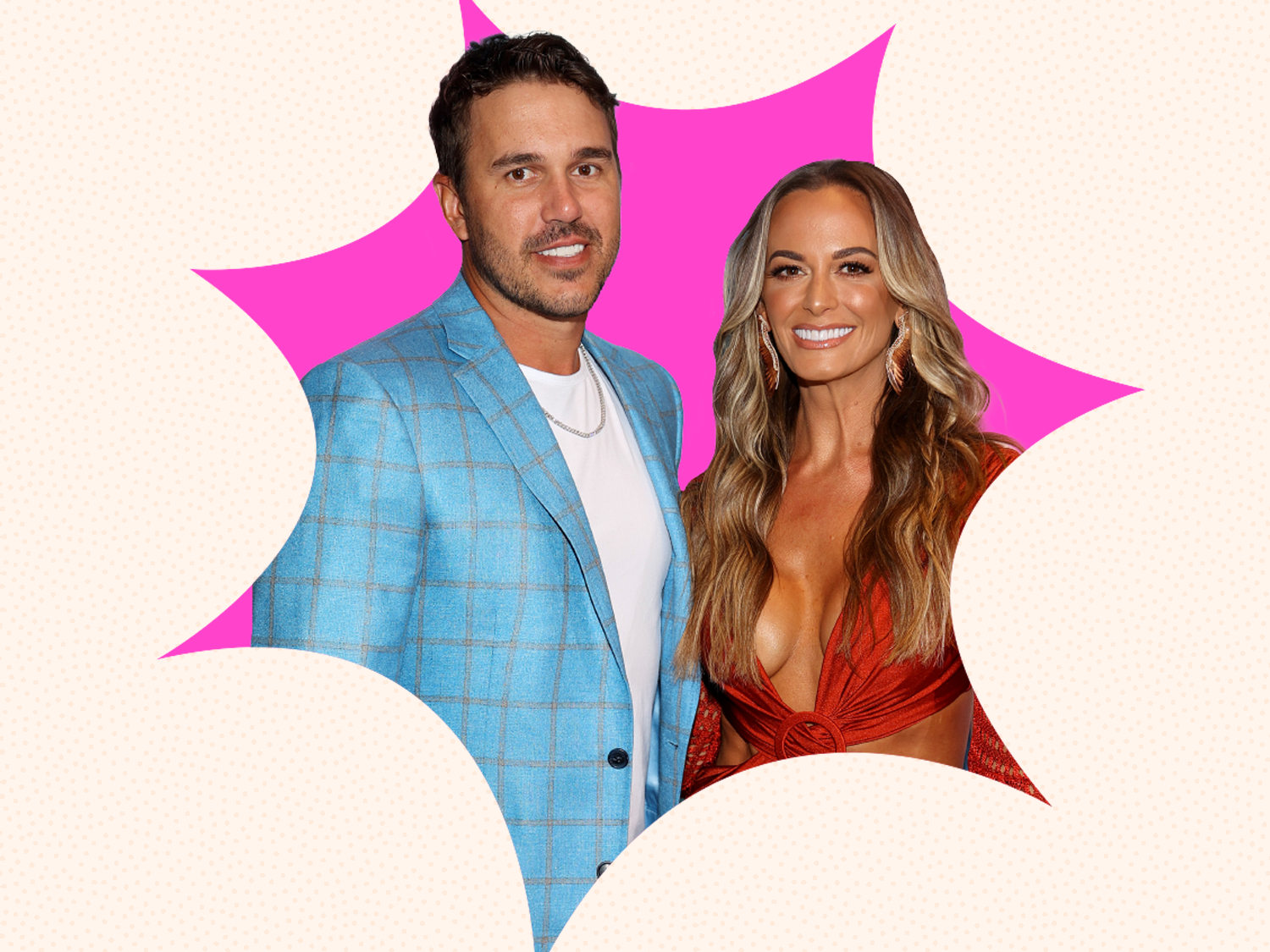
One particular bystander had dealt with her own set experiences related to an interracial marriage. "I don't know what happened to her parents, but whatever it was, she was sad about it," says Davis. "And she was like, 'I just want you to know… Let me show you my parents.' Her mother was Black and her dad was white. She talked about how that would've been their struggle and without them, she wouldn't even be here. The leader of the protest was so moved by it, she was like, 'I hope I have this kind of love one day with somebody who's willing to go that extra mile to love me that way.' And that's really what they all needed to feel and what they needed to hear. And at that point, we were welcomed into that crowd. And so it goes back to our purpose that that's the entire reason why this was the time to do it. So that we could hopefully lead people out of the anger and hurt that they have."
Our Love Story
Davis and Leatherwood's story goes like this: it's the second marriage for both and 2020 was the year the bride was supposed to have her dream wedding. "We actually met through a mutual friend. He graduated from West Point and my son was attending West Point," says Davis. "That same friend [who also graduated from the military academy] had no idea we were dating until like a year into the relationship. It was their 25-year reunion and they were like, 'Wait a second, what are you doing here?' And I'm like, 'OK, our secret's out. I'm with him.'"
Due to COVID-19, the couple had to evaluate their wedding plans, ultimately holding a minimony (a "flash wedding" according to the pair) on June 12 with hopes to follow it with a much larger reception after COVID. "After watching the news and seeing everything that was going on with the pandemic, politics and the protests and witnessing the hurt and anger that people were feeling, we felt like we needed to be a part of the solution," the couple explains. With the help of several generous vendors, they were able to turn around their minimony in no time—including the donation of the bride's dress, her hair and makeup, and even, an officiant's services. The location of choice, perhaps, was most fitting and true to their mission: they chose to wed on the steps of the Supreme Court of the United States.

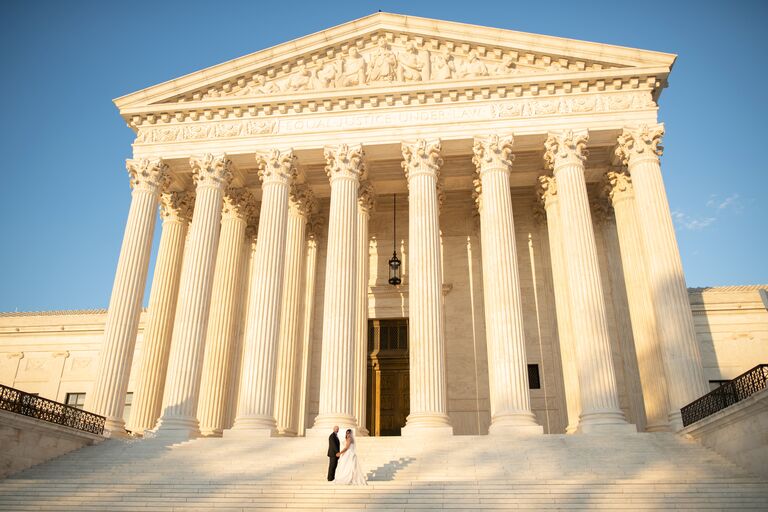
The Takeaway
With so much interest in their impromptu wedding, both Leatherwood and Davis have taken a step back to consider their platform and the broader impact of their relationship. "One quote that this amazing woman says a lot is, 'Be what right looks like,'" the groom reflects. "For me and for us, as we move forward, as we're out in public, and we're representing our families, ourselves, our community, and our professions… We want to ask ourselves, 'What does love look like?' It's not just the squishy love. It's the aspects of this tough love that can endure and withstand trials."
"[With representation], people don't know unless they see it. I didn't know it, prior to meeting Corbett," says Davis. "From a professional standpoint, I knew what right looked like. I'm not sure from a relationship standpoint, not just relationships with the person that I love, but relationships with people, I'm not sure that I knew how to communicate what right looks like from a love perspective. And because we have what we have, I've learned to do that."

It all boils down, again, to exactly what is Loving Day to the couple and to those who learn from their story. "I'm hoping that people take from not only what we've displayed or what we've represented, but also what the Lovings, Richard and Mildred went through and fought for us," the bride concludes. "I'm hoping from that, they look at what was the core or just the base that they led with, and it was love. Everybody was passionate about their cause. And if we can have love at the base of our passion and lead with that, then we can absolutely unite, we can absolutely conquer, we can absolutely win, and love leads with all of that. So it's like love conquers, love unites, love overcomes and at the end, love wins."
